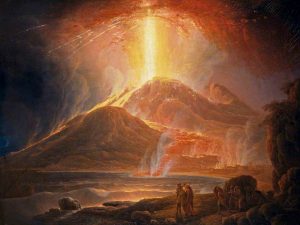Who Invented Spaghetti?
There seems to be a fair bit of controversy and some urban myth surrounding this particular question, which could also be asked as “Who invented Pasta ?”
Marco Polo
Nobleman, Merchant & Adventurer
Marco Polo was a Venetian merchant and adventurer who traveled from Europe to Asia in 1271–95, remaining in China for 17 of those years, and whose book “Il milione” (“The Million”), known in English as the “Travels of Marco Polo”, is a classic of travel literature
| Born : | c. 1254, Venice |
| Died : | 8th January 1324, Venice |
| Books : | “Il milione” (“The Million”) |
The Myth
Legend has it that spaghetti is descended from noodles, based on the premise that Venetian nobleman and merchant Marco Polo imported long, worm-like strands of the them to Italy from China in the late 13th century.
The Truth (probably)
However many Italian food historians (yes there is such a profession) maintain that the Chinese origins of Italian pasta are a myth.
It is true that Marco Polo did spend several years in China, learning the country’s traditions and culture, and probably brought back Chinese noodles and other foods back from his journeys. However pasta culture was already flourishing in the Mediterranean region centuries before he travelled east, among the ancient Greeks and later among the Romans.
It would seem that noodles & pasta were developed in parallel in both the east and west. What is more they are different things so conflating them together as some how being the same is to deny that the preparation, ingredients and toppings are completely different and specific to each civilisation.
Historical texts and works by classical poets help to date the first type of pro-pasta to the time of the ancient Greeks.
The noodles that Marco Polo maybe brought back with him at the end of the 1200s from China were essentially made with rice and based on a different, oriental culinary tradition that has nothing to do with Italian/Mediterranean pasta.
A Pasta Timeline
-
The Greeks first mentioned the existence of laganon, a flat pasta sheet sliced into irregular strips that was later adopted by the ancient Romans with the plural name of laganae. It was used in soups of leek and chickpeas, a very popular Roman dish

laganae were the inspiration for what would later become lasagne
If the word laganae seems vaguely familiar to us then that is because it is. The laganae were the inspiration for what would later become lasagne, stratified pasta sheets usually cooked with meat and tomato sauce.
The philosopher and statesman Cicero was another enthusiast, enjoying laganae’s highly nutritious and filling properties, though he is reputed to have overindulged, eating huge portions and suffering from terrible stomach aches.
-
 Relics found under the ashes of Vesuvius’ eruption in AD 79 that destroyed Pompeii, include documents and well-preserved food remains of this proto-pasta.
Relics found under the ashes of Vesuvius’ eruption in AD 79 that destroyed Pompeii, include documents and well-preserved food remains of this proto-pasta.In ancient Roman times, laganae was a daily meal in each household, a simple but highly nutritious dish for the poor and the working classes, not the wealthy.
-
Spaghetti, in particular, appears to have had Arabic influence. In a book written by an Arab geographer called Al-Idrin and dating to 1154, more than 100 years before Marco Polo’s journeys, it mentions long strands of dough called triya, curled up like balls of wool and exported in wooden barrels along Mediterranean merchant routes from the city of Palermo in Sicily, then under the Arab rule.
-
 The spaghetti that most of us eat today, however, is quite different from that of yesteryear. Earlier ‘pasta-mixtures’ were cut to shape and laid out in the Sun to dry. Modern pasta has no eggs and is dried in special chambers where cool, dry air is circulated around the pasta to ensure it dries evenly to avoid cracking or warping. This type of spaghetti was very definitely invented by the Italians. In fact, it was the creation of one Italian in particular: Nicola de Cecco.
The spaghetti that most of us eat today, however, is quite different from that of yesteryear. Earlier ‘pasta-mixtures’ were cut to shape and laid out in the Sun to dry. Modern pasta has no eggs and is dried in special chambers where cool, dry air is circulated around the pasta to ensure it dries evenly to avoid cracking or warping. This type of spaghetti was very definitely invented by the Italians. In fact, it was the creation of one Italian in particular: Nicola de Cecco.De Cecco ran a flour mill at Fara San Martino in Abruzzo – he was dissatisfied with the sun-drying of pasta as it gave unreliable results, and the pasta often warped, which made it difficult to package for transport. In 1886, he developed his method of drying pasta in cool, dry conditions and founded the De Cecco company which is still operating in Fara San Martino today along with a second factory which was built in the nearby town of Pescara in the 1950s.
So we definitely have the Italians to thank for the modern form of pasta we enjoy around the world.







